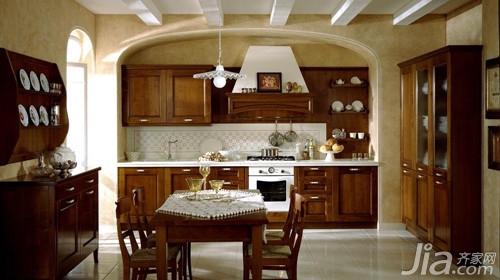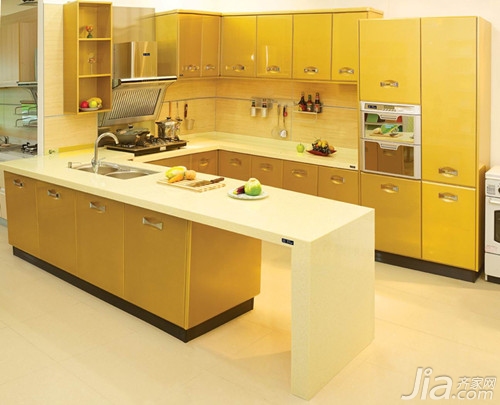Because of the hot cabinet market and the high sales of cabinets, many people choose to join the cabinet to achieve their own ideals of life, then what types of cabinets are joined? These are the cabinet franchisees must understand, today with the small series to see the four major types of cabinets to join , and a detailed analysis for everyone to refer to oh.

Cabinet to join - voluntary to join (VoluntaryChain)
Means that individual single stores voluntarily use the same brand management method and bear all operating expenses. This method is usually the individual operator (owner) pays a fixed amount of guidance fee (commonly known as the franchise fee), which is managed by the headquarters. The knowledge reopens the store, or the original store of the operator is changed to the management method regulated by the chain headquarters through the guidance of the headquarters; usually this method must also pay a fixed guide fee every year, and the headquarters will also send staff to guide, but there is also no such part. For expenses, the cost of opening a store is entirely borne by the franchisee; since the franchisee is a voluntary member, the headquarters only charges a fixed fee, so the gains and losses are not related to the headquarters.
The advantage of this method is that the franchise owner can obtain most of the profits without sharing with the headquarters, and there is no obligation to obey the instructions of the headquarters, but the disadvantage is that the headquarters can therefore be irresponsible, and the guidance is often loose. The quality of the shop is also not easily controlled. Many Taiwanese chain catering businesses operate this way.

Cupboard joining - commissioned (LicenseChain)
Contrary to voluntary joining, franchisees only need to pay a certain fee when they join. Business store equipment and business technology are provided by the headquarters. Therefore, the ownership of the shop belongs to the headquarters. The franchisee has only the right to operate and manage, and profits must be shared with the headquarters. One hundred percent must obey the instructions of the headquarters.
The advantage of this method is that the risk is minimal, and the franchisor does not have to bear the large cost of starting a business. The headquarters needs to assist the business but also share the success or failure of the business, but the disadvantage is that the franchise owner has little autonomy, and the majority of the profits are often handed over to the headquarters. U.S. 7-Eleven operates in this form.

Cabinet to join - franchise (FranchiseChain)
Between the above two methods, the franchisee and the headquarters usually share the expenses of setting up a shop. Among them, the rent and decoration of the shop are mostly borne by the franchisee, and the financial equipment is handled by the headquarters. In this way, the franchisee needs to share profits with the headquarters. The headquarters also has control over the franchisee, but due to the franchisee also has a considerable cost, so the profit is higher. There are also some suggestions and decision powers for the shop's form. Most Japanese convenience store systems operate in this way. At present, domestic cabinet companies mostly adopt this franchise operation mode.

Cupboard join - free to join (GratisChain)
This method is rarely available in the market. This method does not charge any fees. In this way, franchisees mainly target material manufacturers and small and medium-sized small enterprises. Their interests come from the use of technology to buy shares and sell raw materials to customers (manufacturers) to obtain profits. The biggest advantage of this kind of joining method is that it has high security and strong adjustability; the disadvantage is that it is highly targeted and has strong limitations. According to the division of labor in the industry, the application field of technology is to join, and many companies will not charge Fees to join. At present, only the chemical coating industry in China has such a precedent. It is also the slowest development to join. In the cupboard industry, “free to join†is at best a gimmick. The fee for joining is free, but the cost in other places will certainly not be less. The so-called wool is on the sheep. The cabinet joining investors should know the minimum of these commercial games. Common sense, do not stray into "misguided" because of greediness and cheapness, and must make a systematic and comprehensive understanding of the brand you are looking at to join.
About the cabinet to join the relevant information for everyone to introduce here, I hope this article helps everyone. If you still have something you don't understand, you can leave a message to Xiaobian at the bottom. We will answer your questions as soon as possible.
Kitchen Cabinets Custom Cabinets
High quality hook and loop fastener. Provide double strong grip of mesh.
Self adhesive procedures: on the basis of standard tape and special tape, using the high temperature back-glue
fuse machine to make the glue melt on their back, then cover one layer of oiliness release paper.
The product is divided into 3 types: 1.normal adhesive , which is with low melting point, and applicable to use in the winter,
and low temperatured conditions, just common stickiness.
Velcro Tape,Strong Velcro Tape,Eco-Friendly Velcro Tape,Self-Adhesive Hook And Loop Tape
Hebei Charlotte Enterprise Co., Ltd. , https://www.cnscreening.com